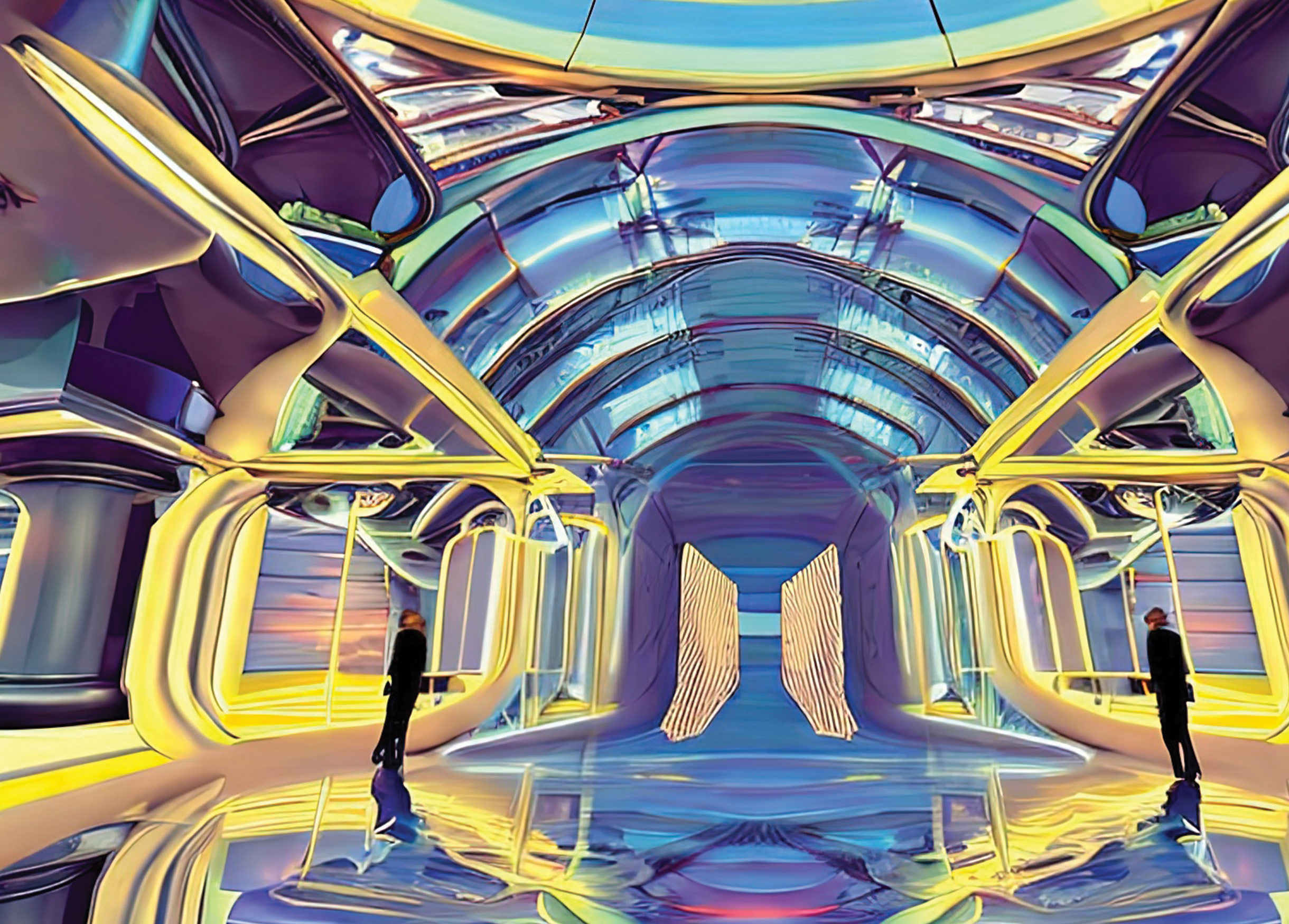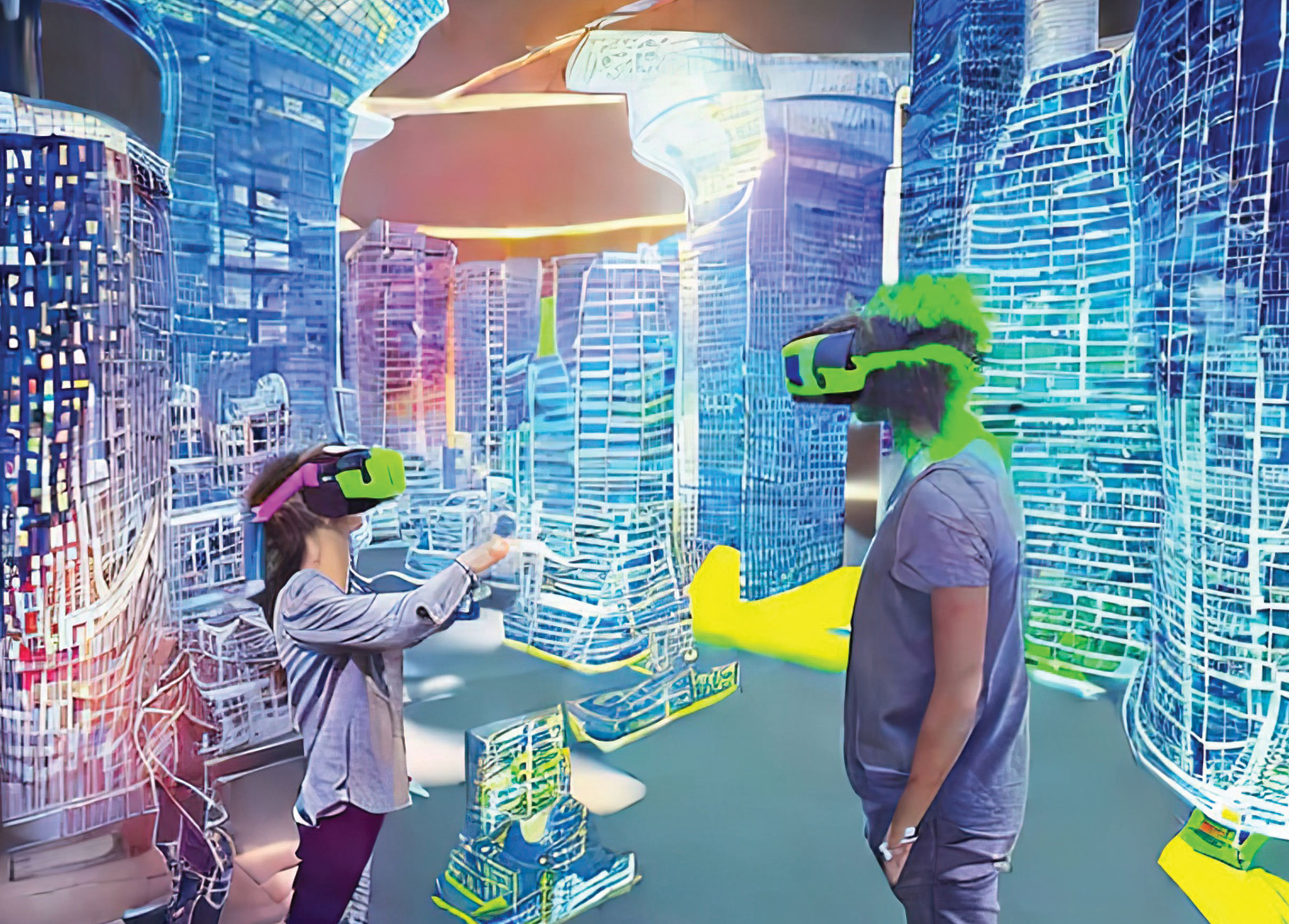The Metaverse Deep Dive: Context
2023.03.06

We are beginning a blog post series on recent developments in technology that have implications for both space-making as well as promising new typologies for human interactions.
In the last year, a single concept has been at the forefront of technology discussions: The Metaverse. Its swift growth was spurred on by Facebook's rebranding to 'Meta' and further investment into its own vision of this futuristic tech space. From Non-Fungible Tokens (NFTs) and Web3 technologies to Altcoins, we can see how these emerging ideas are coalescing around one central idea - that is far more than just another buzzword; it’s an impending reality in which many aspects will soon be embedded within our lives online in once before unimaginable ways.
As technology and architecture continue to organically merge, the metaverse concept will remain a fixture of our field for years - if not decades. Without digital design, there is no modern architecture; conversely, without digital architecture there can be no metaverses. With current 3D software even proto-metaverses or virtual spaces are accessible via personal computers – many businesses falsely asserting they provide full-fledged experiences have already employed this technique with success in their own creations like video games.
Architects must now decide whether to ascend as leaders in crafting what the prospect of the future holds for us all within this space – or take up residence on its sidelines simply as passengers.

We all depend on the Internet for communication and data transfers, but its short history has been fraught with an evolving set of challenges. As we seek to comprehend how architecture can open up a new world in virtual space, it's crucial that we acknowledge these historical issues and consider novel solutions, so this technology matures into something greater than ever before imagined.
Without digital design, there is no modern architecture; conversely, without digital architecture there can be no metaverse.
Could you imagine a world where the Internet was initially created to gather and exploit our information for financial gain? Where laws are twisted, granting surveillance powers that allow prying eyes into the most intimate of details? A reality in which data is commodified with no regard for people's privacy or personal safety; disguised as "artistic endeavors," yet deliberately presented to target unsuspecting wallets. This isn't science fiction... this parallel universe exists today.

In today's ever-evolving digital world, it seems unlikely that the Internet can move forward without replicating existing real-world social and economic issues. With virtual marketplaces springing up everywhere and being largely disconnected from each other, a major shift is needed to create an enduring landscape of stability.
Architects must now decide whether to ascend as leaders in crafting what the prospect of the future holds.
Could this come through embracing a fully decentralized system reliant on crowdsourced control? It appears we are approaching an inflection point for the evolution of our beloved Internet - but will it be enough? The metaverse could be an open, democratic system, where millions of users independently decide what content is acceptable and desirable. At the same time safeguards must exist to ensure that no single government can fully control or shut off this network.
A balance between ensuring freedom from censorship and preserving public order will need to be maintained. From its inception then, the potential implications for unity in diversity should drive attempts at creating something greater than simply “The Internet in 3D” – striving towards a powerful symbiosis of citizens standing together as one connected by their technologies.
Up Next: An in-depth exploration of the metaverse, including its tools and design considerations for creating immersive virtual experiences.
The metaverse could be an open, democratic system.


